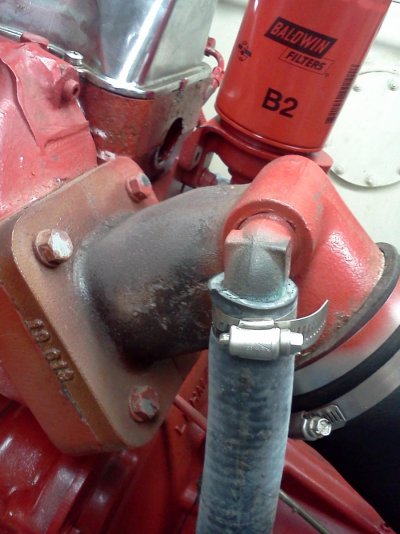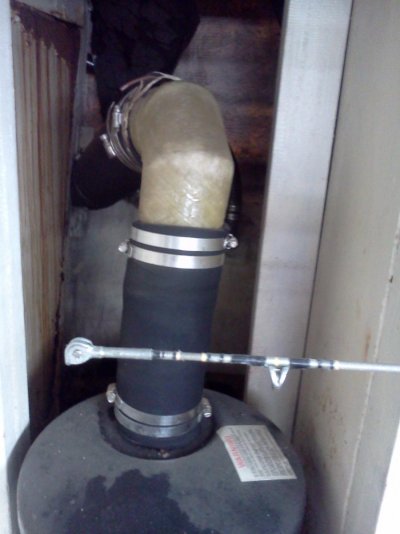Great comments, all. Thanks for taking the time to "chime in."
I intend to check the impeller today, since that seems to be the easiest fix. As for the other indicators: temp is normal, around 160, according to the gauge; regarding the environmental aspect, I neglected to mention that the engine in question is the port side, and the starboard side (which I didn't "mess with") has no steam; the head gasket is the most worrisome of all, however, there is no water in the oil, judging from the clear appearance, and the coolant level has remained the same since performing the work on the exchanger. BTW, the reason I serviced the port side HE to begin with: the engine overheated, alarm sounded at 185 degrees, and I shut it down. There was hard growth build-up in the raw water intake, inside the screen and the through-hull fitting, allowing only a trickle of water through. The impeller had disintegrated, presumably from friction, having no water flow. I took the HE apart looking for remains of the impeller- all clear. Since I had it apart, I figured it couldn't hurt to have it flushed. A local radiator shop soaked it in a chemical bath for a few days, and it looked clean when I re-assembled it.
Another thing that I would enjoy hearing some opinions about: the starboard engine emits water through the exhaust in periodic bursts, about 5 second intervals, while the port engine has a constant flow which, by the way, appears to be adequate.
I have to admit that I had never observed the exhausts closely, prior to the incident with the port engine. I don't know whether they were both emitting water in periodic bursts before.
Thanks again to all.









